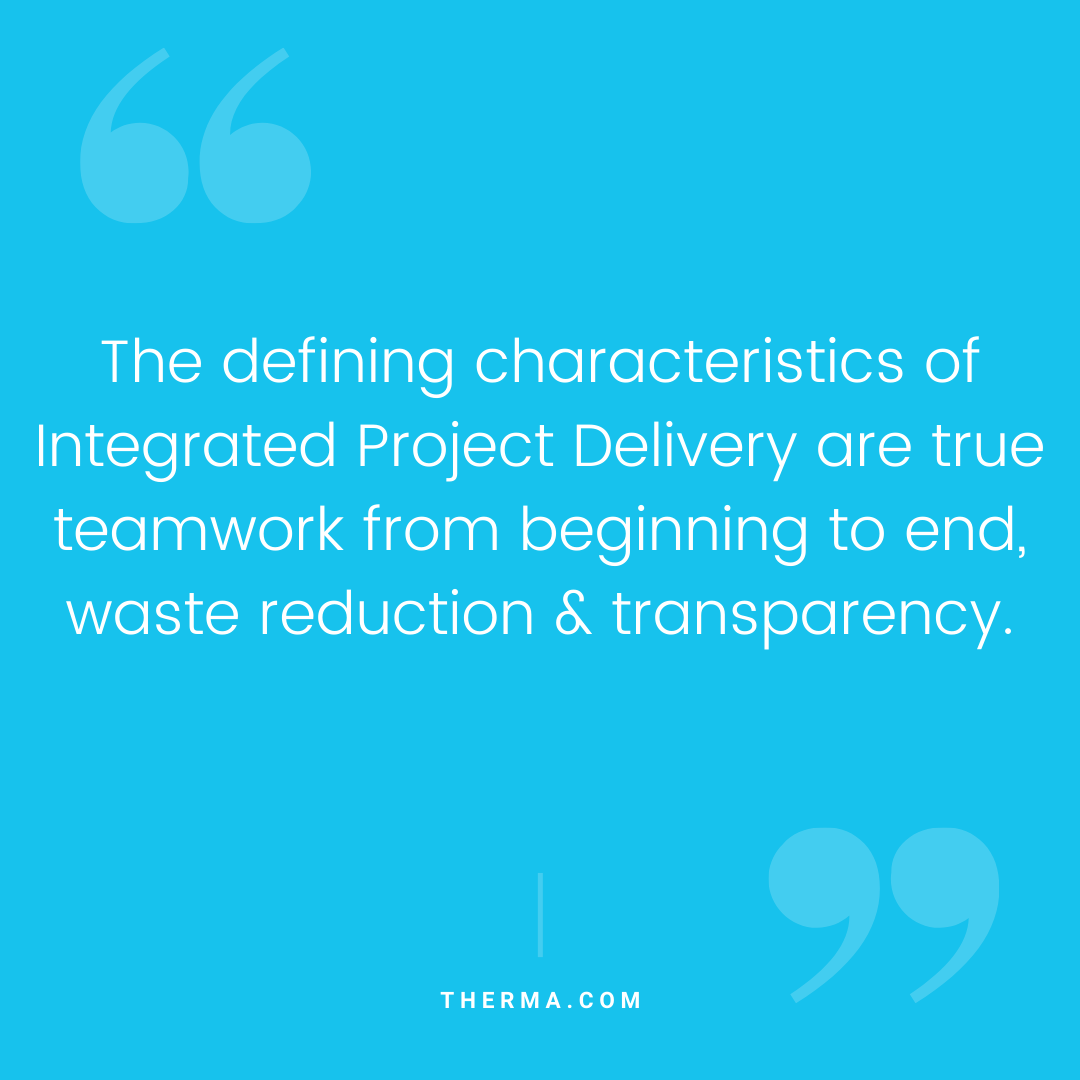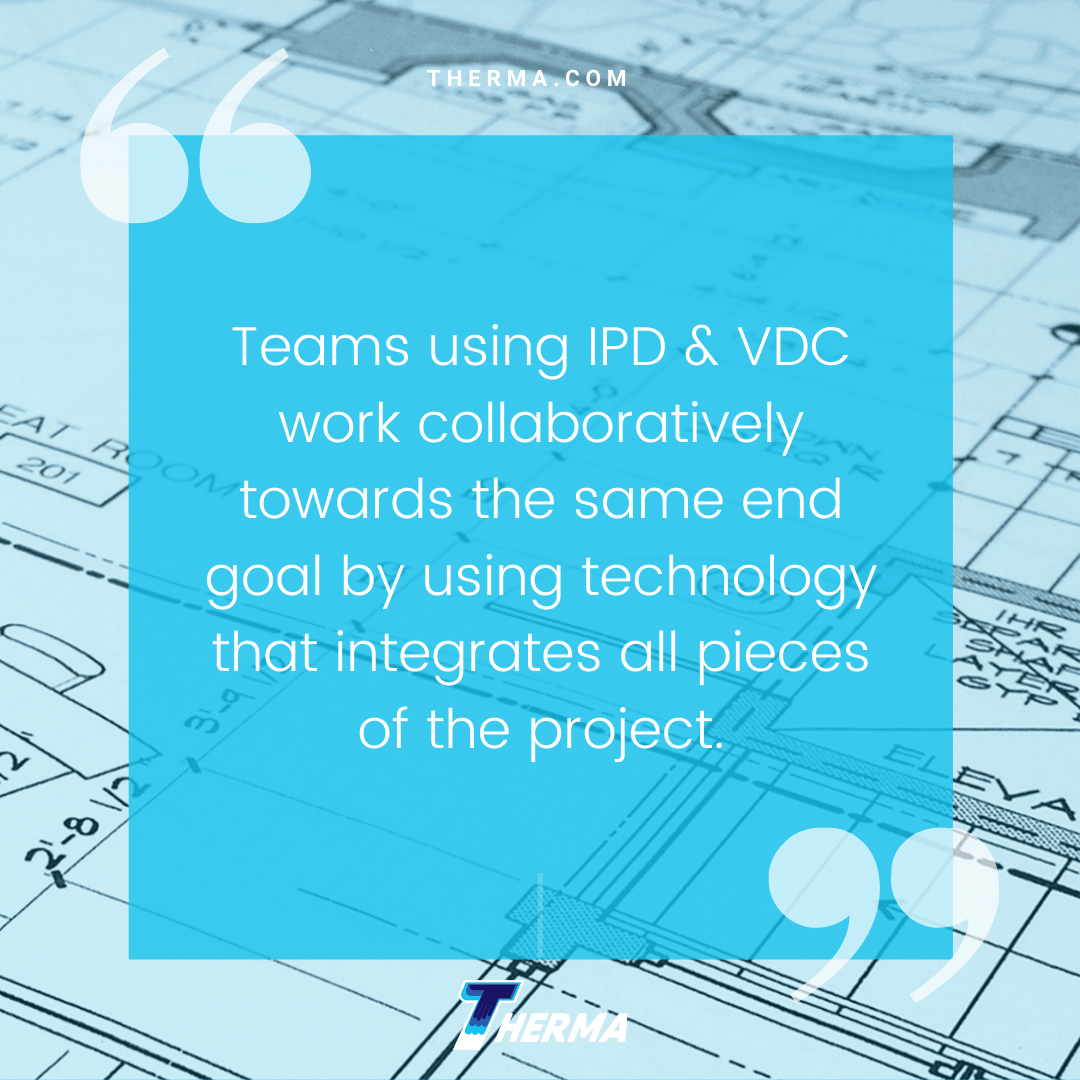Large construction projects can be challenging, costly and risky. However, Integrated project delivery (IPD) and virtual design and construction (VDC) processes help stakeholders avoid project management pitfalls. IPD and VDC are independent, though not exclusive, project delivery methods that emphasize similar approaches: intensive collaboration between individuals and teams, transparency, waste reduction and accountability.
What is Integrated Project Delivery (IPD)?
IPD is a method by which teams utilize each member’s skills and knowledge to create an optimal project outcome. The defining characteristics of IPD are true teamwork from beginning to end, waste reduction and transparency. Stakeholders, including architects, engineers and contractors work together under a single contract that defines project goals, costs and methods for integrating the teams.
IPD focuses on frequent collaboration between project teams and continuous improvement as the project evolves. Traditional approaches to cooperation tend to be hierarchical, focusing on rigidly defined roles and specialties. With IPD, teams may be interdisciplinary and all project participants contribute to solutions or offer input for improving and streamlining the project.
Compensation and rewards are also tied to the overall project’s success and not confined to a team’s contribution. Participants agree to place their profits into a risk pool each month, which may be paid out at milestones or upon completion of the project. This means that everyone becomes invested in the final outcome, not just their individual portion.

What is Virtual Design and Construction Technology?
VDC is technology that digitalizes building design for architects, engineers and contractors. With VDC, stakeholders use technology to turn project objectives into measurable actions. The entire project is planned out and modeled before beginning construction. Participants may use several technologies to produce 3-D models and data, such as laser scanning and aerial photos.
As with IPD, this method requires collaboration from stakeholders and team members from start to finish. All participants collaborate to produce the 3-D model of the project. Teams then use the shared model for planning, workflow and data analysis. Rather than a visual representation of the project, the model functions as a communication tool between parties, setting expectations and providing details for teams to move the project to completion.
VDC fosters efficiency by allowing teams to plan out the project in detail and identify and resolve potential issues before resources are used in actual construction. Modeling provides data to confirm the layout or design meets expectations, which is more cost-effective since changes to a model will prevent rework in the field.
IPD and VDC Integration
Using the IDP philosophy for projects that utilize VDC technology maximizes a project’s outcome with intensive collaboration and efficiency. These are often integrated when designers draw up new building plans and when contractors and engineers are brought on to remodel or retrofit pre-existing structures. IPD and VDC are also used jointly when improving building technology and appliances like security systems and HVAC.

IDP and VDC Integration in Action
In 2011, the Akron Children’s Hospital utilized IDP and VDC in their facility expansion in Akron, Ohio. Previously, the hospital had used traditional design and construction. However, they were faced with the difficult task of constructing a new healthcare building with a low budget, and the hospital owner realized the need to implement lean processes. Architects, engineers and contractors were then brought in to facilitate the expansion, with added efficiency, minimized costs and exceptional collaboration with hospital personnel.
Specifically, implementing these strategies allowed the project to be completed both under the hospital’s target budget and 50-days ahead of the 24-month project timeline. Additionally, the project resulted in nearly doubled operating margins for the hospital and satisfaction across the project’s many stakeholders.
Why You Should Implement IPD and VDC
While the Akron Children’s hospital is just one example of teams using IPD and VDC, countless other projects are utilizing this methodology and technological process. Teams using IPD and VDC work collaboratively towards the same end goal by using technology that integrates all pieces of the project. This includes building design, construction and engineering. Involving everyone and holding all accountable leads to transparency and opportunities to identify and limit waste from redundant equipment, supplies and rework.
Is your company looking to expand or renovate an existing space? Bringing IPD and VDC together will help your project soar. See how Therma can facilitate this process.







